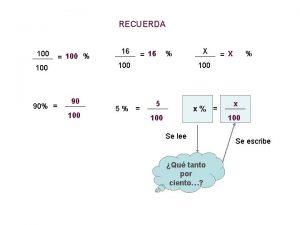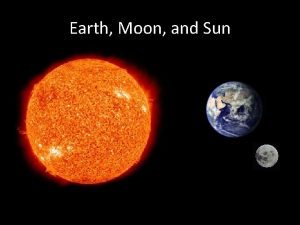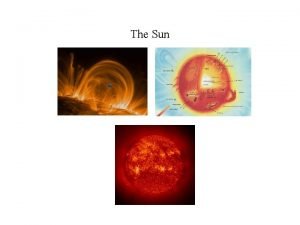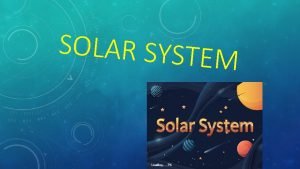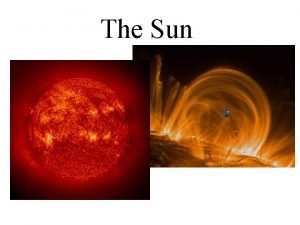THE SUN The sun is one of 100









- Slides: 9

THE SUN The sun is one of 100 million stars that form the via Lattea, our galaxy, and it is the principal source of the earth’s energy. Besides it is the only star close to us. It is the mother star of the solar system in which the planets revolve around. In comparison to the other stars, the sun is an ''average star'' but in comparison to the earth and to the other planets, the sun is really big and it is made up of hydrogen and helium.

THE SUN AND ITS STRUCTURE The sun is the only star that allows life on the Earth.

THE SOLAR CORONA The CORONa is the outer most part of the Sun made up of very thin oinized gas , its temperature can reach 1 million Kelvin. The solar winds are currents that can reach high speeds THAT GO from 250 to 800 km/s into inter stellar space and interacts with the solar system, for example the bombing of lunar rocks and the changing of their appearance.

SOLAR FAULTS We call solar faults defects that we can see on the solar surface.

THE SOLAR PROMINENCE

A prominence is a large, bright feature extending outward from the Sun's surface, often in a loop shape. Prominences are anchored to the Sun's surface in the photosphere, and extend outwards into the Sun's corona.

THE SOLAR FLARES The solar flares are the most explosive events in partnership to the sunspots. They last around an hour. The free enermous quantities of energy.

The mosts spectacular effects of the solar flares are the polar aurora. They are visible in proximity of the magnetic poles and you call northern auroras and southern auroras.













